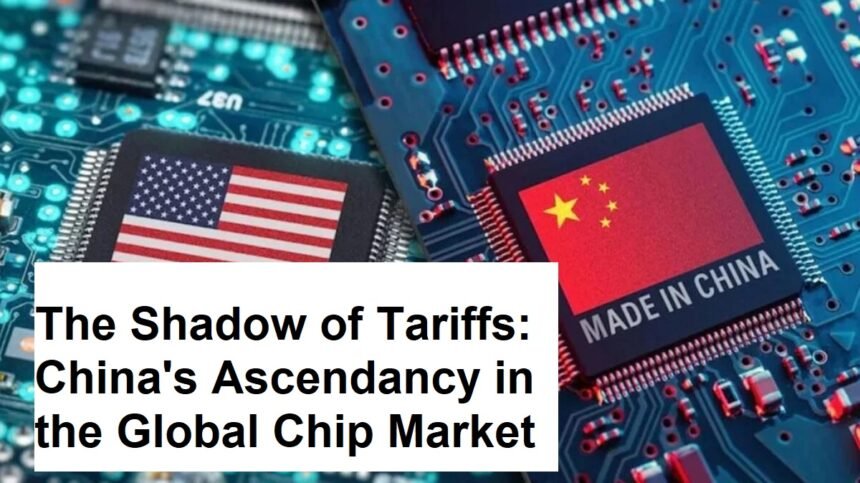The global semiconductor industry, a cornerstone of modern technology, is currently undergoing a significant power shift. While the United States has historically dominated this sector, recent geopolitical events, particularly the trade policies enacted under the Trump administration, have inadvertently paved the way for China to potentially seize market leadership. The reverberations of these policies, specifically the imposition of tariffs on Chinese goods, have created a complex and multifaceted situation that favors China’s long-term ambitions in the chip market.
The Trump administration’s tariffs, intended to curb China’s economic rise and protect American interests, primarily targeted imported goods, including semiconductors. While the immediate goal was to discourage reliance on Chinese manufacturing, the long-term consequences have been far more nuanced. These tariffs have disrupted global supply chains, forcing companies to re-evaluate their sourcing strategies and explore alternative production locations. This uncertainty, coupled with the increased cost of importing Chinese chips, has inadvertently created an opportunity for China to bolster its domestic semiconductor industry.
China has long recognized the strategic importance of self-sufficiency in chip production. Heavily reliant on foreign sources for its semiconductor needs, the Chinese government has invested heavily in domestic research and development, infrastructure, and talent acquisition. The tariffs imposed by the US have only served to accelerate this ambition. Faced with higher import costs and potential supply chain disruptions, Chinese companies have become increasingly motivated to source components domestically, thereby fueling demand for Chinese-made chips.
Furthermore, the tariffs have inadvertently provided Chinese chip manufacturers with a price advantage. While American companies have been grappling with the higher cost of importing components and manufacturing goods, Chinese manufacturers, benefiting from government subsidies and a less stringent regulatory environment, have been able to offer competitively priced alternatives. This price advantage, coupled with the growing demand from domestic consumers and businesses, has allowed Chinese companies to expand their market share and invest further in research and development, creating a virtuous cycle of growth.
Beyond economic factors, the political context surrounding the trade war has also played a significant role. The US government’s efforts to restrict access to American technology for Chinese companies, such as Huawei, have spurred a sense of urgency within China to develop indigenous alternatives. This perceived threat to national security has further galvanized government support for the semiconductor industry, leading to even greater investment and a focused effort to achieve technological independence.
However, it is important to acknowledge that China’s ascendance to market dominance is not a foregone conclusion. The US still holds a significant technological advantage in certain key areas of chip design and manufacturing. Furthermore, the Chinese semiconductor industry faces significant challenges, including a shortage of skilled labor, reliance on foreign equipment and software, and difficulties in achieving the same level of precision and reliability as its American and European counterparts.
Nevertheless, the policies enacted under the Trump administration have undeniably created a favorable environment for China to accelerate its progress in the semiconductor industry. By disrupting global supply chains, increasing the cost of imports, and fostering a sense of national urgency, the tariffs have inadvertently incentivized Chinese companies to invest heavily in domestic production and innovation.
In conclusion, while the long-term implications of these policies remain to be seen, the immediate impact has been to empower China’s semiconductor industry and potentially pave the way for it to surpass the United States in global market share. The shadow of tariffs has created an opportunity for China to realize its long-held ambition of becoming a global leader in chip manufacturing, a development that will undoubtedly reshape the landscape of the global technology industry. The US must now adapt and refocus its strategies to maintain its competitive edge in this critical sector.












